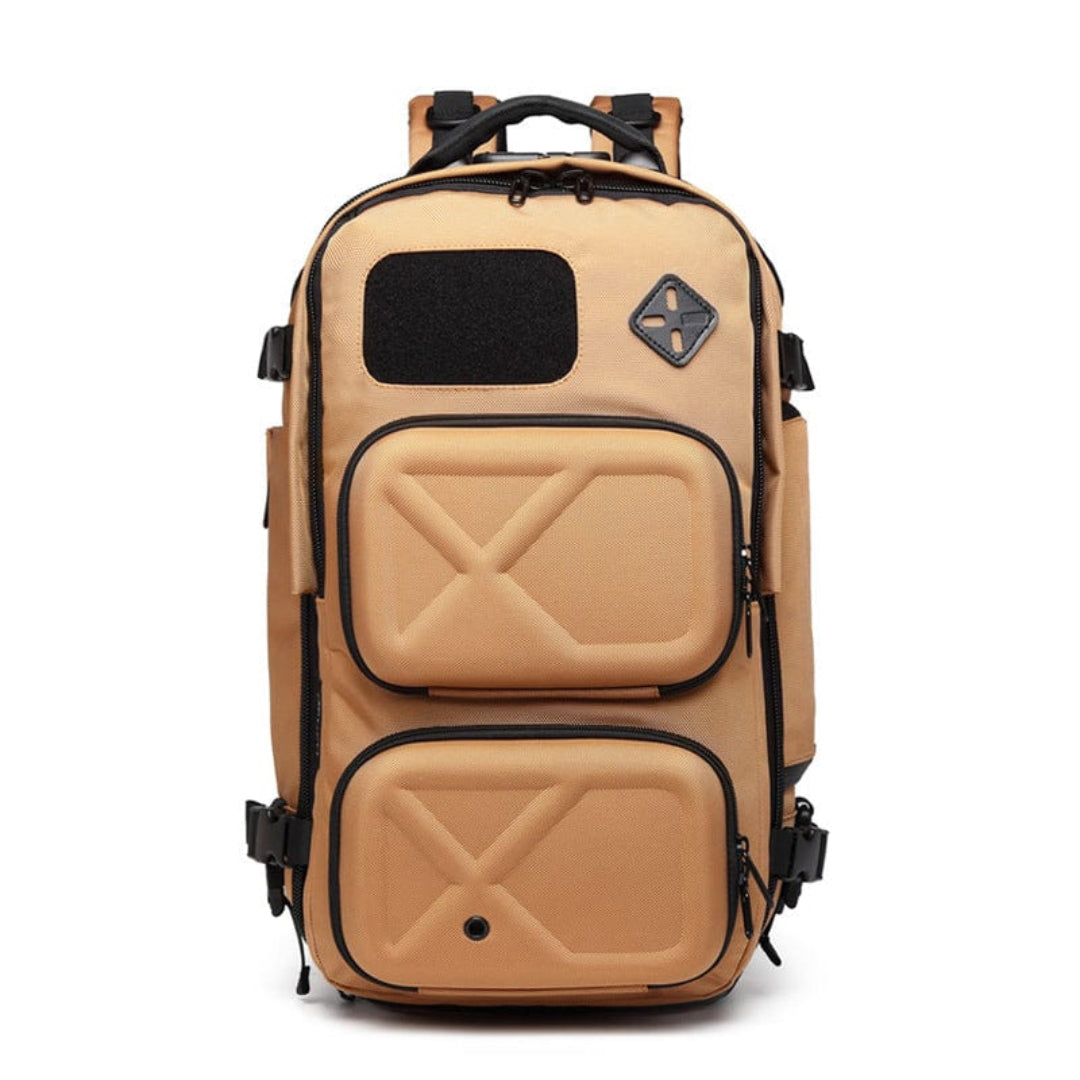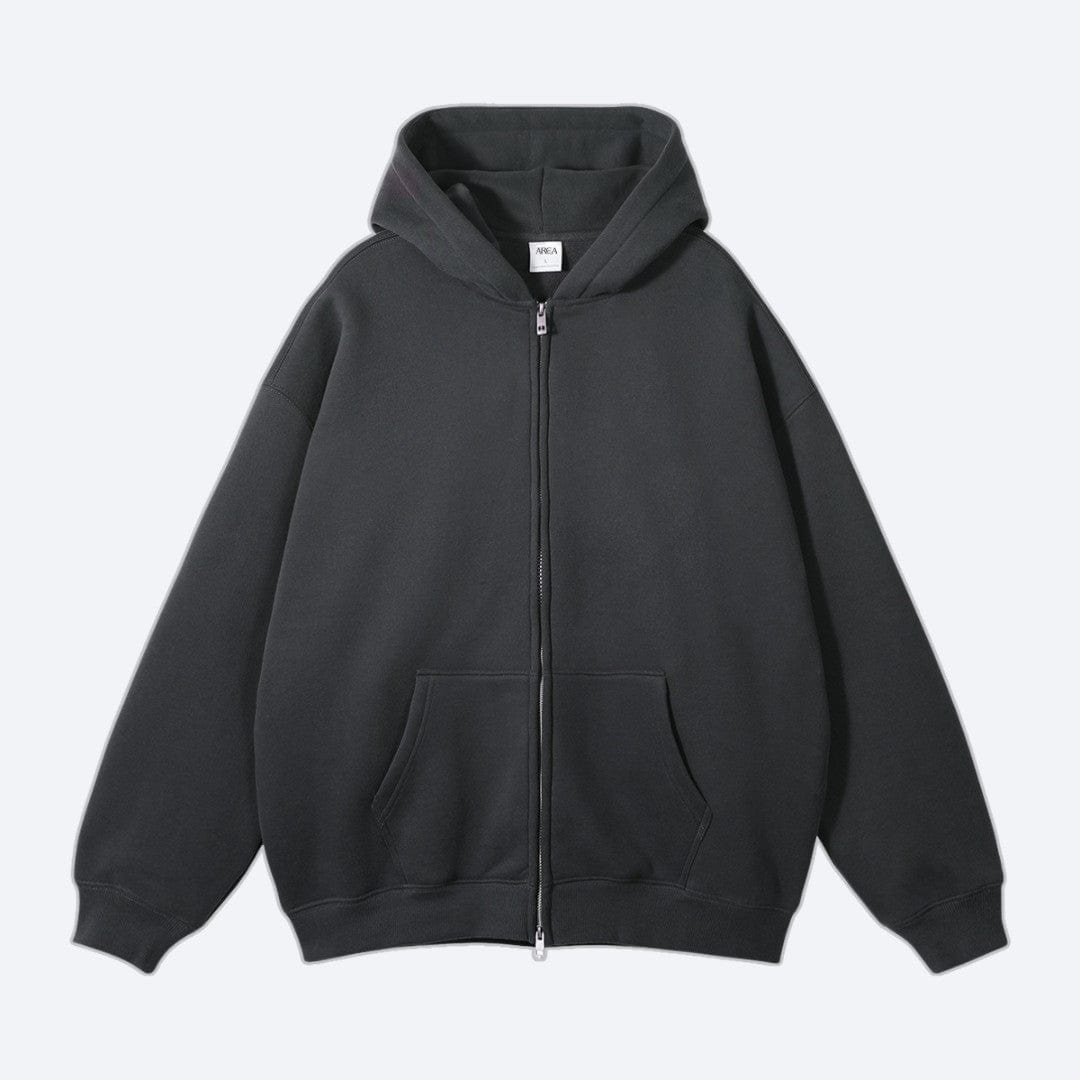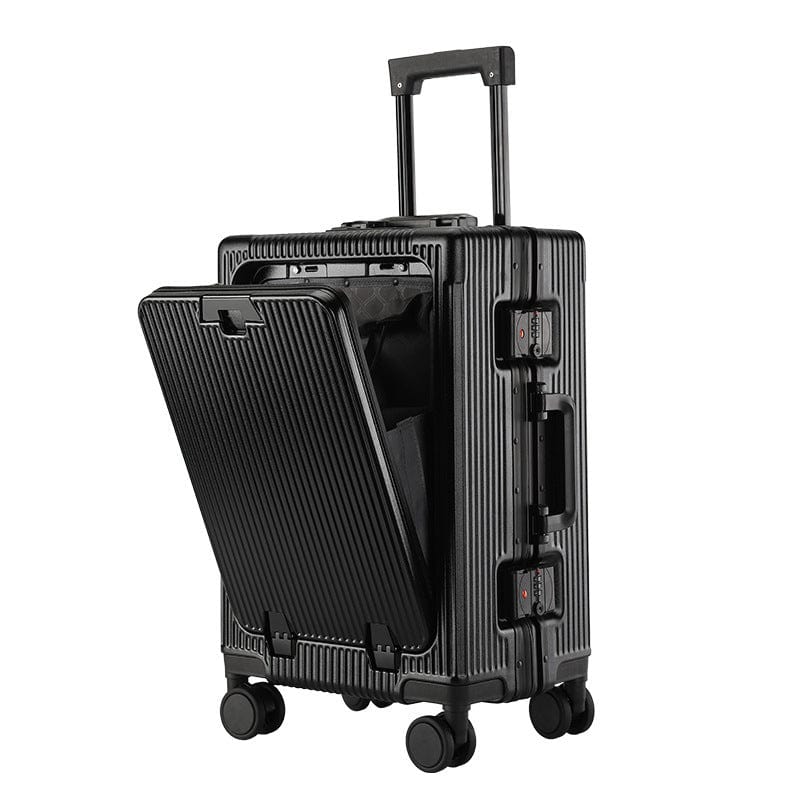Packing for Ireland isn’t as simple as tossing a few outfits into your suitcase. The weather can swing from sunshine to rain in minutes so you’ll need to be ready for anything. Many travelers arrive unprepared only to discover that layering and waterproof gear are absolute essentials on the Emerald Isle.
Best Travel Backpack for Exploring Ireland
Selecting the best travel backpack for Ireland ensures you stay agile on cobbled streets and city buses. Compact carry-ons —20 to 22 inches—fit easily in overhead bins on European trains and buses, minimizing transit stress. Waterproof outer shells protect your gear from frequent Irish rain, and internal compartments streamline packing and organization for quick access.
Lightweight models under 5 pounds help avoid unnecessary bulk during daily outings. Multiple-entry zippers and padded laptop sleeves support both sightseeing and remote work stops. Backpacks with adjustable shoulder straps and ventilated back panels prevent discomfort during extended walks in places like Dublin or Galway.
Packing cubes fit well in standard travel backpacks, keeping essentials like rain jackets, layering pieces, and travel accessories organized and accessible. Special features such as an external water bottle pocket or hidden RFID security pouch offer added convenience and theft protection.
Add a foldable duffel or day bag to expand capacity for artisan finds like Irish linen or wool that you might pick up. By waterproofing your main backpack—using liner bags or plastic inserts—you guard clothing staples and electronics from moisture even in heavy downpours.
What to Know Before Packing for Ireland
Packing for Ireland requires adaptability and an understanding of local travel logistics. Prepare for weather shifts, transportation routines, and Ireland-specific essentials.
Travel Docs & Essentials To Remember
- Entry: Get visa-free access for 90 days if you're from the U.S. and most European countries.
- Currency: Use the Euro in the Republic of Ireland and Pound Sterling in Northern Ireland.
- Connectivity: Stay connected with an Airalo eSIM or local SIM card for reliable mobile coverage throughout Ireland.
- Power: Pack a universal adapter for Type G plugs and a power bank for charging on the go.
- Transport: Use buses and trains for city travel; rent a car for rural touring, and drive on the left.
Ireland by Season: What to Know & Do
Spring: Expect 8–15°C / 46–59°F with cool, damp air and some sudden sun. Visit Cliffs of Moher in the fog and seek shelter in cozy pubs.
Summer: Temperatures reach 15–22°C / 59–71°F, rain still appears, and daylight lasts longer. Explore the Wild Atlantic Way or take a cold swim, then find a lively beer garden.
Fall: Air cools to 8–16°C / 46–61°F with dramatic skies and brisk mornings. Hike Killarney National Park or try Galway’s autumn oyster tastings.
Winter: Experience 2–8°C / 35–46°F, with rain, wind, and short days. Visit museums, enjoy festive markets, or warm up near the fire in a rural inn.
|
Season |
Typical Weather (°C) |
Typical Weather (°F) |
Example Activities
|
|---|---|---|---|
|
Spring |
8–15 |
46–59 |
Cliffs of Moher, castle ruins, pubs |
|
Summer |
15–22 |
59–71 |
Wild Atlantic Way, beach, hiking |
|
Fall |
8–16 |
46–61 |
Park hikes, oyster tastings, music |
|
Winter |
2–8 |
35–46 |
Museums, markets, fireside pints |
Local Tips Worth Knowing
- Always pack a hooded rain shell instead of an umbrella—wind destroys them quickly.
- Expect laundry access in most towns for easy outfit repeats, which keeps luggage light.
- Dress codes remain casual everywhere, from pubs to cafés.
- Ultraviolet rays still burn on cloudy days, so SPF is necessary year-round.
- Social moments matter: join rounds, approach interactions with patience, and embrace local hospitality.
- Pack with versatility in mind; leave extra space to bring home local finds after your adventure.
What to Wear & Pack for Ireland (By Season)
- Spring (March–May)
Layers like long-sleeved shirts, lightweight sweaters, and a warm jumper adapt to temperatures from 7°C to 15°C (45°F to 59°F). Waterproof jackets with a hood shield you from frequent rain. Comfortable walking shoes or lightweight boots allow you to handle muddy or dewy conditions. Accessories such as scarves and light gloves add warmth during chilly evenings.
- Summer (June–August)
Short-sleeved shirts, breathable tees, and light trousers or jeans provide comfort as average highs reach 16°C to 20°C (61°F to 68°F). Shorts, a sun hat, and sunglasses help you take advantage of occasional warmer, sunny spells. A light jacket or fleece addresses cooler nights, while a rain shell remains necessary due to quick weather changes. Extra socks and mid-midge mesh protection benefit visits near lakes from mid-June to mid-August.
- Fall (September–November)
Sweaters, thermal tops, and a mix of durable jeans and casual trousers keep you comfortable in temperatures ranging from 8°C to 14°C (46°F to 57°F). Waterproof outerwear handles increased rainfall. Sturdy boots, a wool hat, and a thicker scarf offer insulation against brisk winds, especially along the coast.
- Winter (December–February)
Insulated jackets, thermal leggings, and heavy sweaters or fleeces address cold and damp conditions with lows averaging 2°C to 7°C (36°F to 45°F). Waterproof, lined boots and wool socks improve comfort in wet and occasionally icy streets. Warm hats, gloves, and scarves remain essential for retaining body heat. Choose moisture-wicking base layers to manage condensation when moving indoors.
Packing Essentials By Season
|
Season |
Avg. Temp (°C/°F) |
Key Clothing |
Must-Have Accessories
|
|---|---|---|---|
|
Spring |
7–15 / 45–59 |
Sweaters, layered tops |
Waterproof jacket, gloves, scarf |
|
Summer |
16–20 / 61–68 |
Tees, light jacket, shorts |
Rain shell, sun hat, extra socks |
|
Fall |
8–14 / 46–57 |
Sweaters, trousers, jeans |
Waterproof coat, boots, wool hat |
|
Winter |
2–7 / 36–45 |
Insulated jacket, thermals, fleece |
Lined boots, warm gloves, beanie |
Adapt layered outfits for unpredictable weather in every season. Select moisture-wicking fabrics and easy-care materials for packing efficiency.
Ireland Style 101: Read This First
Irish style always prioritizes comfort and weather-readiness before trends. Outfits that move seamlessly from a city café to a rugged coastal trail highlight the casual, adaptable look you’ll see everywhere.
Clothes for an Irish Summer
Dressing for summer in Ireland means planning for temps between 59–71°F (15–22°C), frequent rain, and strong coastal winds. Packing layers gives you the flexibility to navigate the island’s unpredictable climate.
- Cotton Tees (2–3) – Neutral or earth tones blend with the landscape and layer easily. Cotton blends wick sweat and keep their shape over repeat wears.
- Long-Sleeve Tops (1–2) – Performance knits or UPF-rated fabrics provide sun protection and warmth on brisk mornings.
- Lightweight Waterproof Shell (1) – A compact rain jacket keeps you dry when afternoon showers hit.
- Button-Downs or Polos (1–2) – These easily dress up your look for dinners or pub visits.
- Dressy Shirt (1) – A wrinkle-resistant, tailored shirt transitions from day hikes to city nights.
- Fleece or Hoodie (1–2) – Pull one on when a cool Atlantic breeze picks up.
- Quick-Dry Pants (2) – Stretchy, breathable pants handle rain, trails, and city streets. Dark neutrals hide dirt and dress up easily.
- Shorts (1) – Quick-dry styles suit hiking and beach dips, but aren’t always practical for city wear.
- Waterproof Footwear (1 pair) – Trail shoes or sneakers with Gore-Tex or other weatherproofing help when exploring both urban and rural areas.
Packing tip: Rewear layers and minimize bulk—local style means practical, not flashy.
Right Clothes for Irish Fall and Spring
Early autumn and spring in Ireland bring temps from 46–61°F (8–16°C), with cloudy skies and quick weather changes.
- Merino Base Layers (2–3) – Long or short sleeves in merino wool or blends regulate temperature, resist odors, and keep your core dry and warm.
- Pullovers (2–3) – Lightweight but cozy styles offer warmth for chilly starts and layered looks for city or countryside.
- Dressy Top or Overshirt (1) – Smart enough for a dinner, practical enough to wear over a tee.
- Insulated Waterproof Layer (1) – A shell, puffer, or vest works for warding off drizzle and sudden wind, especially on the west coast.
- Versatile Pants (2 pairs) – Technical trousers withstand rain and look presentable in city settings.
- Waterproof Boots or Hybrid Hikers (1 pair) – Rubber-soled, sturdy shoes perform best on slick cobbles or hiking paths.
- Blazer or Cardigan (optional, 1) – Choose a classic color for semi-formal events.
- Merino Socks and Underwear (3–4 pairs) – Quick-drying and low-odor for repeated wears.
Choose streamlined pieces that match, layer well, and endure regular rain.
What to Wear in Ireland in Winter
During winter, temperatures drop to 36–50°F (2–10°C), but damp air and sharp wind amplify the chill.
- Thermal Base Layers (2–3) – Opt for fitted merino or synthetic fabrics for excellent insulation.
- Heavyweight Fleece or Wool Pullover (1) – A must-have for outdoor adventures or cold pub evenings.
- Merino Wool Button-Downs (1–2) – Choose easy-care, temperature-regulating options that look smart and stay fresh.
- Insulated Jacket + Waterproof Shell (1 each) – Layer these for maximum protection against rain and wind.
- Quick-Dry Waterproof Pants (2 pairs) – Leave jeans at home; technical trousers dry faster and handle moisture.
- Fleece-Lined Leggings or Thermal Tights (1 pair) – Use as a base layer or for relaxing indoors.
- Warm Accessories (1 set: beanie, gloves, gaiter) – Go for fleece or merino—Irish winds chill fast.
- Waterproof Boots or Insulated Hikers (1 pair) – Ensure they’re comfortable for long days and have solid tread.
- Wool Socks (4–5 pairs) – Rotate these for warmth, comfort, and moisture control.
Pack for warmth, dryness, and comfort—expect to rewear quality pieces. Local style always adapts to the forecast, prioritizing practical layers and weather-tested accessories.
Toiletries & Travel Essentials for Ireland: The No-Nonsense List
Packing toiletries and travel essentials for Ireland means prioritizing practicality and convenience.
Pack travel-sized items like toothpaste, toothbrush, deodorant, shampoo, soap, razor, and feminine hygiene products. Bring your preferred brands as some may not be readily available.
Ireland uses Type G plugs (three rectangular prongs). Add at least one universal travel adapter and bring chargers for each device.
Carry a refillable water bottle or thermos to minimize single-use plastic and stay hydrated on hikes or long drives.
Use noise-canceling headphones and a supportive neck pillow for comfort during flights or long bus rides.
Bring a compact day pack to carry rain gear, snacks, and valuables during day trips.
Secure your passport, printed accommodation confirmations, insurance information, and emergency contact numbers in a waterproof folder or pouch.
- Emergency snacks
Include granola bars or nut packets for quick energy on remote hikes or during travel delays.
Prioritize these toiletry and travel essentials to cover Irish weather changes and rural access limitations, enhancing your comfort and readiness for any situation.
Gear & Devices: What to Pack (and Why It Matters)
Packing effective gear and devices for Ireland lets you stay connected, capture memories, and manage unpredictable weather with ease. Universal adapters top the list since Ireland uses Type G plugs—three rectangular prongs—so devices from most countries need an adapter to charge. Bringing two adapters covers all gadgets if you use laptops, phones, cameras, or e-readers on the same trip.
Portable power banks help in remote areas where charging outlets are rare, such as along the Wild Atlantic Way or rural hiking trails. Models with a minimum 10,000mAh capacity support all-day sightseeing with consistent device use.
Lightweight, compact cameras and smartphones capture Ireland’s scenery without adding bulk. If you pack high-resolution cameras, bring enough memory cards and weather-proof cases to protect data from rain.
Noise-canceling headphones increase comfort during long bus rides, train journeys, or flights. These become particularly helpful when city or street noise is high or when you need to rest on overnight connections.
Reusable water bottles and insulated thermoses keep you hydrated and cut costs, especially since Ireland's tap water remains safe to drink countrywide. Foldable or slim-profile bottles compress to save space in day packs.
Weather-resistant phone pouches and dry bags shield electronics from moisture, especially during hikes or along windy coasts. Add a microfiber screen cloth for quick cleaning after rain showers.
Medical essentials, such as prescription medicines, must travel in original packaging. Pharmacists in Ireland can be strict about dispensing medication without documentation. Digital or paper copies of prescriptions help in emergencies.
Table: Essential Gear & Device Checklist for Ireland
|
Device or Gear |
Purpose |
Notes
|
|---|---|---|
|
Universal adapter |
Charge all devices |
Type G plug (three rectangular prongs) |
|
Power bank |
Portable charging on-the-go |
10,000mAh recommended |
|
Camera/smartphone |
Photos/videos |
Extra memory, weather-proof case |
|
Headphones |
Noise reduction |
Noise-canceling recommended |
|
Water bottle/thermos |
Hydration |
Tap water safe to drink |
|
Dry pouch |
Protects electronics from rain |
For phone, charger, passport |
|
Prescription meds |
Health |
Keep in original packaging |
You’ll maximize comfort, safety, and usability for every device and essential packed by selecting well, with local context in mind.
What Not to Pack for Ireland (Trust Us)
Skip these items for Ireland travel to maximize comfort and avoid extra weight:
-
Umbrella: Strong coastal winds and sudden gusts in Ireland make umbrellas ineffective even in cities like Galway and Dublin. Waterproof hooded rain jackets keep you dry and free up your hands regardless of wind and rain intensity.
-
Bulky Clothing: Heavy sweaters, thick coats, and single-purpose gear occupy space without adding flexibility. Layer lightweight shirts, thin thermal tops, and water-resistant shells to stay comfortable through daily weather shifts.
-
Multiple Pairs of Shoes: More than two pairs of shoes, including sandals or formal footwear, become unnecessary. Waterproof walking shoes and one spare pair handle urban strolls, hikes, and evenings out.
-
Full-Size Toiletries: Ireland's accommodations supply basic toiletries and restrictions apply to liquids in cabin luggage. Pack travel-sized essentials and restock locally if needed.
-
Specialized Electronics: Hair dryers, steamers, or high-wattage styling tools often require voltage converters or risk damage. Hotels and rentals provide most basics, and low-power electronics like universal adapters and power banks cover your needs.
-
Heavy Books and Guides: Carrying multiple physical travel guides, books, or maps adds excess weight. Download offline maps and guides onto your mobile device for easy reference anywhere across the country.
-
Dressy, Trend-Driven Outfits: Ireland’s fashion values comfort and practicality, especially in coastal and rural communities. Reusable basics in neutral tones let you blend in and adapt.
-
Non-Waterproof Luggage: Canvas or fabric suitcases that lack waterproof liners allow moisture to damage contents. Select waterproof bags or line your case with plastic to shield clothing and electronics from rain.
Packing only practical, adaptable, waterproof, and compact items ensures you’re ready for the Emerald Isle’s weather, terrain, and local lifestyle.
Final Take: Pack Light. Stay Ready. Say Yes.
When you’re packing for Ireland, flexibility is your best friend. With the right gear and a thoughtful approach, you’ll be ready for whatever the Emerald Isle throws your way—rain or shine.
Keep your bag light and your mind open. Embrace the adventure and let comfort and practicality guide your choices. There’s no need to stress about every possible scenario. Ireland’s charm lies in its unpredictability, and you’ll enjoy it most when you’re prepared but not weighed down.
Travel smart, trust your list, and leave a little room for memories you’ll want to bring home.
























